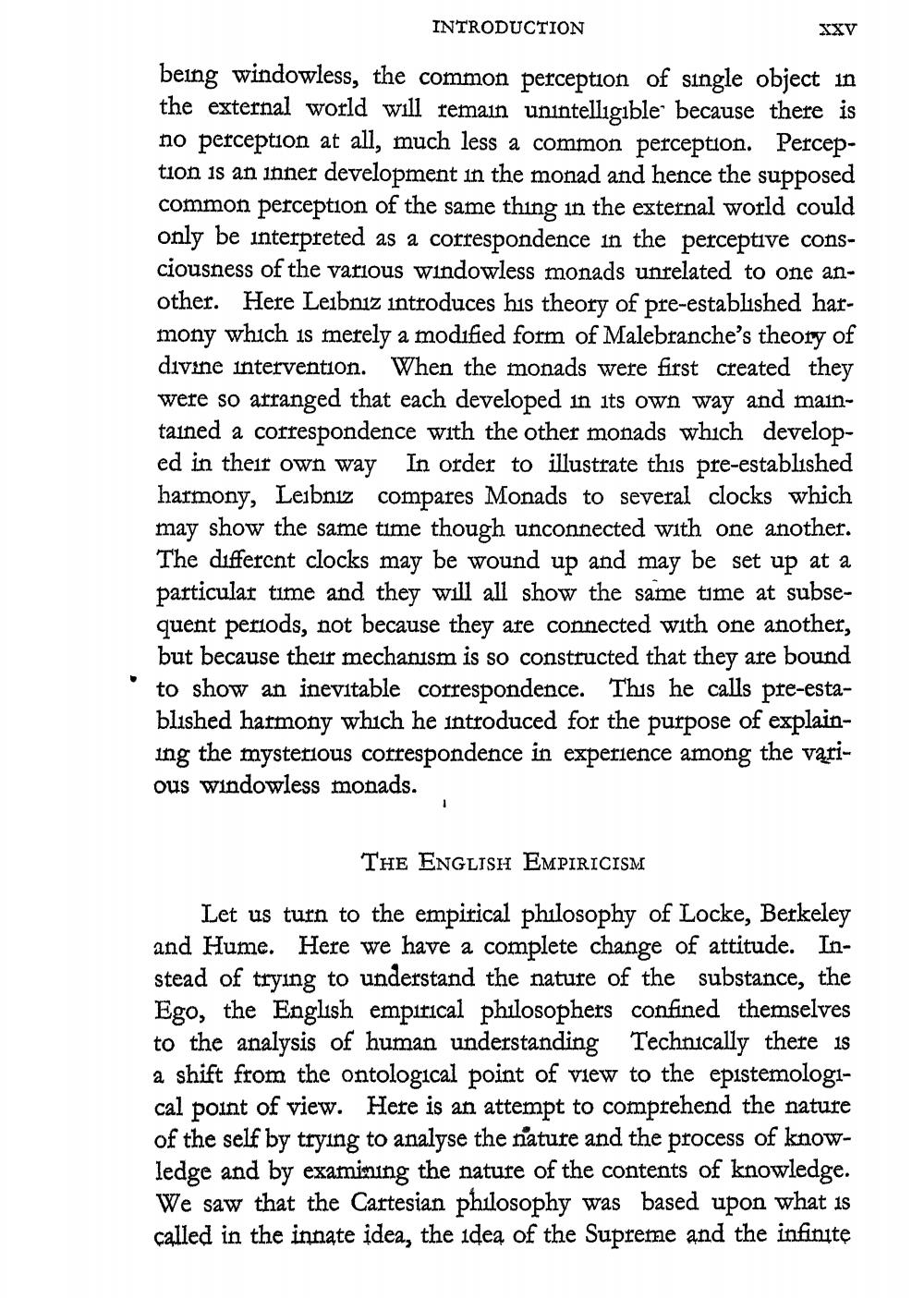________________
INTRODUCTION
XXV
being windowless, the common perception of single object in the external world will remain unintelligible because there is no perception at all, much less a common perception. Perception is an inner development in the monad and hence the supposed common perception of the same thing in the external world could only be interpreted as a correspondence in the perceptive consciousness of the various windowless monads unrelated to one another. Here Leibniz introduces his theory of pre-established harmony which is merely a modified form of Malebranche's theory of divine intervention. When the monads were first created they were so arranged that each developed in its own way and maintained a correspondence with the other monads which developed in their own way In order to illustrate this pre-established harmony, Leibniz compares Monads to several clocks which may show the same time though unconnected with one another. The different clocks may be wound up and may be set up at a particular time and they will all show the same time at subsequent periods, not because they are connected with one another, but because their mechanism is so constructed that they are bound to show an inevitable correspondence. This he calls pre-established harmony which he introduced for the purpose of explaining the mysterious correspondence in experience among the various windowless monads.
1
THE ENGLISH EMPIRICISM
Let us turn to the empirical philosophy of Locke, Berkeley and Hume. Here we have a complete change of attitude. Instead of trying to understand the nature of the substance, the Ego, the English empirical philosophers confined themselves to the analysis of human understanding Technically there is a shift from the ontological point of view to the epistemological point of view. Here is an attempt to comprehend the nature of the self by trying to analyse the nature and the process of knowledge and by examining the nature of the contents of knowledge. We saw that the Cartesian philosophy was based upon what is called in the innate idea, the idea of the Supreme and the infinite




